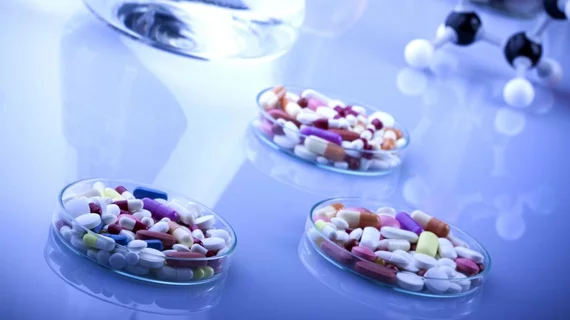Seniors shell out way more for generic prescriptions over brands
With rising prices of prescription drugs taking center stage in the national healthcare dialogue, turning to generic drugs has been heralded as a way to keep costs down. However, generics may not be the cost-saving alternative once thought under the current design of the Medicare Part D program, which gives away such heavy discounts for out-of-pocket costs for brand-name drugs that seniors are actually shelling out way more for generics, according to a study published in Health Affairs.
In fact, the out-of-pocket costs for seniors between generics and brand names aren’t even close. Seniors reach the coverage gap in Medicare––also referred to as the donut hole where catastrophic coverage kicks in after reaching a certain cost threshold––after spending $928 in out-of-pocket costs for prescription brand-name drugs, compared to $3,730 in spending for users of generic drugs.
In other words, seniors have to spend far more to get additional coverage under Medicare Part D when they use generic drugs. This incentive appears to be backwards to achieve the real savings that generics do actually offer to the federal program. U.S. savings from generics was more than $265 million in 2017, according researchers.
“This is the WRONG message to send [Part D] beneficiaries!” Stacie Dusetzina, lead author of the report and associate professor of health policy and the Ingram Associate Professor of cancer research at Vanderbilt University School of Medicine, said in a tweet discussing the impacts of the study. “Generics should not cost more than brands.”
Vanderbilt researchers compared 2018 prices from the Medicare Formulary Files to look at expected annual out-of-pocket spending for seniors using pairs of brand-name and generic or biosimilar drugs. In 2018, lawmakers were concerned about the incentive to purchase brand-name drugs and included a modification to the Part D benefit in the Bipartisan Budget Act to ensure that biosimilars did not cost more than brand-name counterparts, but the protection didn’t extend far enough to generics.
“While the BBA lowered patients’ out-of-pocket spending for biosimilars, it also increased discounts on brand-name products and did nothing to reduce out-of-pocket spending for nonbiosimilar generic drugs,” Dusetzina et al. wrote in the study. “In some cases, this resulted in higher out-of-pocket spending for generics than for brand-name drugs.”
According to the study, median point-of-sale prices for the standard fill of brand-name drugs were higher than generics and biosimilars. The average point-of-sale price for generics and biosimilars was 38.1% less than brand-name drug prices across all the products included in the study.
For seniors paying out-of-pocket costs however, biosimilars and specialty generic drugs required higher spending, though there was an average reduction in spending for the four traditional generics in the study of $709. Patients filling a year of the biosimilar Inflectra––which was approved by the FDA in 2016 to treat various diseases including Crohn’s disease, rheumatoid arthritis and severe plaque psoriasis––would spending $4,097 out of pocket compared to $2,858 for the brand-name version, Remicade.
At the same time, discounts to brand-name drugs have increased from 50% to 70%, an additional annual savings of about $209. Users in 2019 will see out-of-pocket spending declining for brand-names and rising for generic drugs.
To bridge the gap between the out-of-pocket spending, researchers suggested two policy solutions: eliminating manufacturer discounts from out-of-pocket spending calculations and adjusting the coverage gap discount.
“Policy makers should modify the Part D benefit to ensure that patients who use generic drugs are not penalized for doing so, whether that be through removing the manufacturer discount from out-of-pocket spending calculations or extending the discount to all generic drugs,” researchers concluded.

